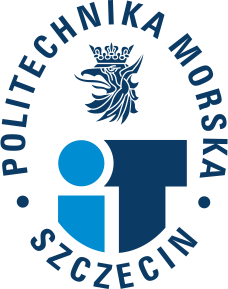Publikacje Naukowe Piotr Majzner
Dorobek Naukowy Pracownika w BAZIE NAUKOWEJ PM:
https://bazawiedzy.am.szczecin.pl/pl/scientist/322
Tytuł: Analytical - diffraction model of V-band propagation for the Radiocommunication Events Management System (REMS)
Autor/Autorzy: Marcin Mąka, Piotr Majzner
Miejsce publikacji: Annual of Navigation, vol. 26, no. 1, pp. 127-135
Rok: 2019
Słowa kluczowe: radiocommunication, Radiocommunication Events Management System, GMDSS, propagation
Abstrakt: The paper presents an analytical-diffraction propagation model for the needs of the Radiocommunication Events Management System, for coast and ship radio stations in sea area A1. The V-wave propagation in sea area 1 has been analyzed as part of an analysis of ranges of particular radio stations and their ability to establish radio contact. The theoretical basis and assumptions on which the model structure design process is based have been presented. Methods of modelling and presentation of dislocation of particular radio stations and their ranges have been discussed.
Tytuł: Propagation models for the Radiocommunication Event Management System (REMS) in the V-band
Autor/Autorzy: Marcin Mąka, Piotr Majzner
Miejsce publikacji: Scientific Journals of the Maritime University of Szczecin-Zeszyty Naukowe Akademii Morskiej w Szczecinie, vol. 58, no. 130, pp. 55-60
Rok: 2019
Słowa kluczowe: radiocommunication, Radiocommunication Events Management System (REMS), Global Maritime Distress and Safety System (GMDSS, propagation, ranges of v-band
Abstrakt: This paper presents an analytical method for determining marine VHF communication bands based on the propagation model included in the International Telecommunication Union (ITU) recommendations. The developed method to determine communication bands was compared with the model recommended by the International Maritime Organization (IMO). The usefulness of the method developed by the authors has been demonstrated for the needs of the Radiocommunication Events Management System (REMS)
Tytuł: The radio operator decision support system model
Autor/Autorzy: Marcin Mąka, Piotr Majzner
Miejsce publikacji: Zeszyty Naukowe Akademii Morskiej w Szczecinie, vol. 52, no. 124, pp. 120-127
Rok: 2017
Słowa kluczowe: decision model, GMDSS, radiocommunication, signals, graph theory
Abstrakt: The article proposes a model of the system supporting the decision-making process relating to the radio operator on board a ship after a distress alert is received by a Digital Selective Calling (DSC) controller working on VHF channel 70. The model is aimed at the implementation into the system of radiocommunication event management. The system takes into account the existing Radio Regulations. The model makes use of Petri nets, which are elements of graph theory. The time domain is comprised in the developed graph, and the states (places) and transitions capable of autonomous functioning are separated, as are those places and transitions requiring direct operator action based on empirical knowledge.
Tytuł: Radiocommunication event allocation model for a selected sea area
Autor/Autorzy: Marcin Mąka, Piotr Majzner, Andrzej Lisaj
Miejsce publikacji: Zeszyty Naukowe Akademii Morskiej w Szczecinie, vol. 50, no. 122, pp. 52-58
Rok: 2017
Słowa kluczowe: radiocommunication, GMDSS, allocation model
Abstrakt: This article presents the structure of a model of the allocation of radiocommunication events at coastal radio stations, land-based satellite stations and on vessels in sea area A3. The propagation of radio waves in the HF band has been analyzed to examine the range of various radio stations and their capabilities of establishing communication between each other. We also present methods of modeling and displaying the deployment of individual stations, of presenting radiocommunication events as a function of time using time diagrams, as well as the manner of the chronological presentation of radiocommunication events and related decisions. It has been shown that there is a relationship between the effectiveness of communication and propagation conditions that is strongly dependent on the time-of-day. We present the need to develop a decision support system for the radio operator on the bridge.


